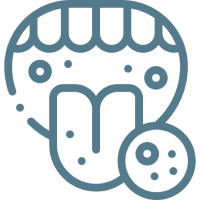Pediatric Sleep Apnea

Pediatric Sleep Apnea
Give Your Child the Gift of Better Focus, Better Grades, and Better Sleep
Have you noticed that your little one stops breathing for a few seconds during sleep or has irregular breathing patterns? Or perhaps they are excessively sleepy during the day or have trouble waking up in the morning despite having an early bedtime? Untreated obstructive sleep apnea is known to result in the following consequences:
Regular, loud snoring
Long pauses in breathing, sometimes followed by gasps or choking sounds
Difficulty staying asleep or sleeping in unusual positions (e.g., with their head tilted back)
Breathing through the mouth (instead of through the nose)
Excessive sweating during the night
New or sudden episodes of bedwetting
Unexplained fatigue and drowsiness during the day
Irritability, aggression, hyperactivity, and other behavioral problems
Unexpectedly slow, stunted growth (known as “failure to thrive”)
What is Pediatric Sleep Apnea?
It is a sleep disorder in which a child’s breathing is partially or completely interrupted during sleep because of a physical obstruction in the airway. Enlarged tonsils or adenoids and the resulting swelling are the most common causes of sleep apnea, but it could be anything that reduces their airway size, such as:
A receding chin (retrognathia) or a smaller-than-normal jaw (micrognathia)
Excess tissue in the neck and throat area
Deviated septum, nasal polyps, or chronic congestion
Asthma, allergic rhinitis, or another chronic respiratory condition
While sleeping, a child with sleep apnea can stop breathing for 3 to 20 seconds or more. However, it is not just the duration but also the frequency and the associated drop in oxygen saturation that are important. The frequency of apneas and hypopneas (partial reductions in breathing) is measured by the Apnea-Hypopnea Index (AHI):
An AHI of 1-5 is considered mild sleep apnea.
An AHI of 5-10 is considered moderate sleep apnea.
An AHI greater than ten is considered severe sleep apnea.
Symptoms of Pediatric Sleep Apnea
The idea of trying to fall asleep in an unfamiliar place, attached to machines and under the watchful eyes of others, doesn’t exactly sound appealing. For some, just thinking about it may be enough to induce anxiety. Thankfully, there are other ways to get the answers you need. The test comes in a small, portable kit with a small device, no bigger than your hand, which you connect to a chest strap, a thin tube for your nose, and a clip for your finger. These three components help the device monitor several elements, including:
ADD/ADHD
Snoring
Aggressive behavior
Crowded/crooked teeth
Restless sleep
Daytime drowsiness
Chronic allergies
Mouth breathing
Nightmares
Underdeveloped lower jaw
Swollen tonsils/adenoids
Bedwetting
Difficulty in school
Stunted growth
Overbite
Dark circles under the eyes
Based on your child’s symptoms and an evaluation of their oral anatomy, we will prescribe a treatment tailored to your child’s needs. When a child has sleep apnea, they most likely have blocked nasal passages (thus, breathing through the mouth) and malocclusions (misaligned teeth). Our treatment goal at Luna Wellness Centre is to help them get the deep, restorative sleep they need and ensure their teeth grow straighter and healthier.
How We Treat Obstructive Sleep Apnea in Children

Frenectomy
Tongue tie (ankyloglossia) is a condition present at birth where a short frenulum limits the tongue’s mobility where it connects to the bottom of the mouth. Lip ties occur under similar circumstances when the frenum that attaches the lip to the gums is too short. These issues can interfere with your infant’s or child’s ability to nurse, eat, drink, and speak effectively. A tongue or lip tie also plays a role in the development or worsening of obstructive sleep apnea in children through two ways:

Open-Mouth Breathing
Many children with tongue ties tend to breathe through their mouths during sleep. This constant open-mouth breathing dries and irritates the soft tissues in their throat and mouth. As a result, the tonsils may become inflamed and swollen, leading to a blocked airway.

Low Tongue Position
A tongue tie can sometimes keep the tongue positioned lower in the mouth than normal. Ideally, the tongue should rest against the roof of the mouth when not in use, which helps shape the developing palate. However, a tongue-tied too low can prevent the palate from forming correctly, resulting in smaller nasal passages and issues with sleep-related breathing as the child grows.
Myofunctional Therapy
Myofunctional therapy involves prescribing the child a series of exercises to target the muscles of their mouth, face, and throat. This improves the strength and function of these muscles, promoting better breathing, swallowing, and speaking. As these oral and facial muscles get stronger, they don’t collapse anymore and stop blocking the airway during sleep.
We teach your child how to position their tongue against the roof of their mouth and encourage nasal breathing; this continuous firming up and retraining improves the airway’s stability during sleep and reduces the frequency and severity of sleep apnea episodes. Our dental sleep practitioners may recommend the following myofunctional exercises on their own or as part of the treatment protocol after a laser frenectomy:
Tongue Clicks
You press the tongue firmly against the roof of the mouth and then snap it down, creating a clicking sound.
Tongue Slides
Starting with the tongue at the back of the front teeth, the child slides the tongue backward along the roof of the mouth as far as it can go.
Balloon Inflation
The child inflates a balloon with a series of breaths without removing the balloon from the mouth between breaths.
Lip Seal Exercise
You press the tongue firmly against the roof of the mouth and then snap it down, creating a clicking sound.
Nasal Breathing Exercises
They practice breathing deeply in and out through the nose to normalize nasal breathing and reduce mouth breathing.
Butterfly Breathing
The child visualizes their stomach as a butterfly while lying down and tries to keep it still as they breathe in through the nose.
Cheek Puff Exercise
They fill their cheeks with air, hold it, and then pass the air from one cheek to another.
Chewing Exercises
They practice proper chewing techniques using a chewing device or tough, chewable food.
Sucking Exercises
They are asked to suck on straws or suck thick liquids through a straw to reinforce better tongue positioning.
Contact Us for Pediatric Sleep Apnea Treatment
There is more than one way to treat children with obstructive sleep apnea. We at Luna Sleep Centre work to determine the most appropriate treatment based on the symptoms and severity of the condition. Before recommending treatment, we carefully review each patient’s upper airway structure, medical history, and sleep study results.
If you need help scheduling a sleep apnea test for your child or are unsure if this sleep disorder is behind their behavioral problems, contact us today for a consultation.
